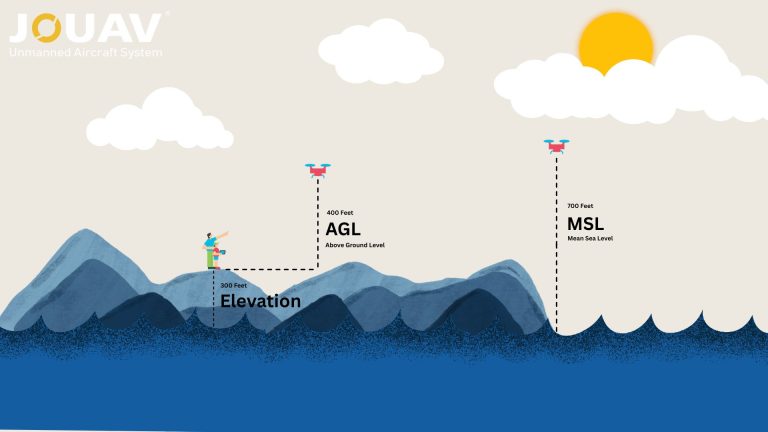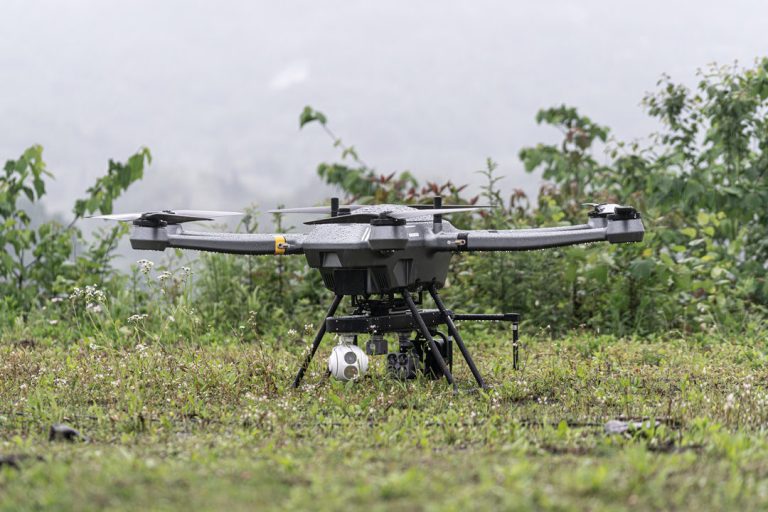Hexacopter Drone: Top Picks and Buying Tips
With their six-propeller design, hexacopters stand out for their stability, payload capacity, and flight redundancy. This makes them a powerful choice for aerial photography, precision agriculture, industrial inspections, and emergency response.
Their advanced aerodynamics and intelligent flight systems allow smoother operation and greater adaptability in challenging conditions.
In this guide, we’ll explore the different types of hexacopters, their key features, and how they work, helping you understand how to choose, build, or optimize a hexacopter drone for both commercial and recreational use.
What is a Hexacopter Drone?
A hexacopter drone is a multirotor aircraft equipped with six arms, each housing a motor and propeller.
This six-rotor configuration provides superior stability, lifting capacity, and redundancy compared to quadcopters (4 motors), making it a go-to tool for professionals demanding precision and reliability.

How Does a Hexacopter Work?
A hexacopter operates through a carefully orchestrated interplay of six rotors, a flight controller, and electronic systems to achieve stable, controlled flight.
Each of its six motors—mounted on arms arranged in symmetrical "X" or "H" configurations—spins a propeller to generate lift.
Half of the rotors spin clockwise, while the others spin counterclockwise, neutralizing rotational torque and maintaining balance.
By adjusting the speed of individual motors, the drone executes precise movements: increasing thrust on rotors diagonally opposite one another tilts the hexacopter forward, backward, or sideways (pitch and roll), while varying the speed of clockwise vs. counterclockwise rotors enables rotation (yaw).
The flight controller, equipped with gyroscopes, accelerometers, and barometers, continuously monitors orientation and altitude, making micro-adjustments to motor speeds up to hundreds of times per second to counteract wind, maintain hover, or follow pilot commands.
Hexacopter vs. Quadcopter: Pros and Cons
Hexacopter drones offer unique advantages for specialized applications but come with trade-offs.
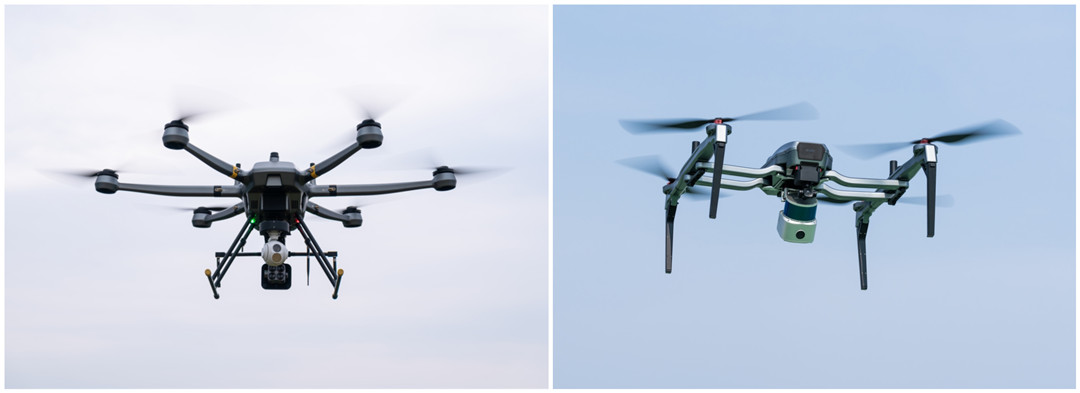
Head-to-Head Comparison:
| Factor | Hexacopter | Quadcopter |
| Lifting Power | 2–5+ kg (heavy gear) | 0.5–2 kg (light payloads) |
| Speed | Faster, stable in wind | Agile, better for tight spaces |
| Redundancy | Survives 1-2 motor failures | Crashes if 1 motor fails |
| Portability | Bulky, hard to transport | Compact, folding designs |
| Cost | 2–3x more than similar quadcopters | Budget-friendly |
Pros
- 30%+ Lifting Power: With six motors, hexacopters can lift 2–10 kg, accommodating professional cameras, LiDAR sensors, or agricultural sprayers—far beyond a quadcopter’s 0.5–2 kg limit.
- Stability: Six rotors spaced 120° apart create a balanced thrust matrix, enabling smooth flight in gusty conditions—critical for 4K aerial photography or cinematic drone shots.
- Fail-Safe Reliability: Hexacopters can lose 1–2 motors and still land safely. Critical for industrial inspections (e.g., wind turbines) or emergency response missions.
- Faster Flight: More rotors = greater thrust, enabling hexacopters to hit higher speeds (ideal for hexacopter racing drones).
Cons
- Price Premium: Hexacopters command a significant price premium over quadcopters.
| Type | Entry-Level | Professional | High-End |
| Hexacopter | $300-1,500 | $1,500-5,000 | $5,000-30,000 |
| Quadcopter | $100-500 | $500-2,500 | $1,500-10,000 |
- Shorter Battery Life: 15–25 minutes vs. 30+ minutes for quadcopters. Hybrid drone hexacopters (gas-electric) extend flight time but add complexity.
- Complex Maintenance: Six motors, ESCs (Electronic Speed Controller), and wiring require frequent calibration. Piloting a hexacopter demands understanding redundancy protocols and payload balancing.
- Bulkier Design: Longer arms prevent propeller collisions but make hexacopters larger. A large hexacopter drone (800mm+) requires dedicated cases, unlike backpack-friendly quadcopters.
Top 10 Hexacopter Drones of 2025
This review highlights the best hexacopter drones of 2025, covering various categories, from professional-grade models to more affordable options for enthusiasts and beginners.
| Drone Model | Flight Time | Payload | Camera | Best For |
| JOUAV PH-20 | 70-75 mins | 10kg | Gimbal Camera, LiDAR | Industrial missions, surveillance, surveying |
| DJI Matrice 600 Pro | 32 mins | 6kg | Zenmuse, Ronin-MX gimbal | Professional, heavy payload |
| Inspired Flight IF12000A | 43 mins | 8.7kg | EO/IR, optical sensors | Surveillance, security |
| Yuneec Typhoon H | 25 mins | 0.5kg | 4K Video Camera | Aerial photography, beginners |
| DJI S800 Spreading Wings | 18 mins | 2.5kg | Zenmuse cameras | Aerial photography, videography |
| Aperture Hexacopter | 25-30 mins | 1.5kg | 3-axis gimbal | Aerial photography |
| Walkera TALI H500 | 20 mins | 0.7kg | GoPro, iLook+, Sony RX100 | Aerial video, surveying |
| DJI F550 | Varies | Customizable for cameras | Varies | DIY drone builders |
| Flywoo Firefly Hex Nano | 5-6 mins | 0.12kg | Built-in camera, 4K camera | Micro drones, casual users |
| Sky Rider Night Hawk | 6-8 mins | Low | Wi-Fi Camera | Beginners, casual use |
JOUAV PH-20 - Best for Industrial Missions
The JOUAV PH-20 is an exceptional industrial-grade hexacopter designed to handle the most demanding missions. With a long flight time of up to 75 minutes and a robust 10 kg payload capacity, this drone can easily carry high-end payloads like LiDAR sensors, cameras, and surveying equipment.
Its advanced GPS navigation, millimeter wave radar for obstacle avoidance, and precision landing system make it a highly reliable choice for professional applications such as surveillance, industrial inspections, surveying, and 3D mapping. The drone's compact, foldable design ensures portability, making it suitable for both large and tight spaces.
| Pros | Cons |
|
|
DJI Matrice 600 Pro - Best for Industrial Imaging
The DJI Matrice 600 Pro is a highly advanced hexacopter designed for professional applications requiring heavy payloads. With the ability to carry up to 6 kg of payload, this drone excels in cinematography, surveying, and inspection missions.
Equipped with the Zenmuse gimbal system and DJI’s A3 flight controller, the Matrice 600 Pro ensures smooth, stable flight even with heavy equipment. It offers advanced redundancy systems, which improve flight safety by providing backup systems for key components such as motors and flight controllers. Its long flight time and range make it perfect for large-scale industrial operations.
| Pros | Cons |
|
|
Inspired Flight IF12000A - Best for Surveillance
The Inspired Flight IF12000A is designed for commercial-grade surveillance and industrial inspections. It can carry up to 8.7 kg of equipment, including optical sensors and thermal imaging cameras, making it ideal for search and rescue operations, security surveillance, and infrastructure monitoring.

Image credit: inspiredflight.com
The drone’s 43-minute flight time allows for long missions without frequent recharging, and the built-in FPV (first-person view) system ensures real-time situational awareness. With advanced GPS and RTK systems, this drone offers precise location tracking and autonomous flight capabilities.
| Pros | Cons |
|
|
Yuneec Typhoon H - Best for Aerial Photography
The Yuneec Typhoon H stands out with its Intel RealSense technology that provides intelligent flight modes and obstacle avoidance. It’s equipped with a 4K UHD camera on a 360-degree gimbal, allowing for smooth, high-definition footage from any angle.
With six rotors providing excellent stability, the Typhoon H is perfect for both professional and enthusiast aerial photographers. Its retractable landing gear ensures unobstructed shots, while the real-time video feed allows precise camera control. The Typhoon H is designed to be beginner-friendly, with auto-pilot modes while still providing pro-level features.
| Pros | Cons |
|
|
DJI S800 Spreading Wings Hexacopter - Best for Professional Videography
The DJI S800 Spreading Wings is a high-end hexacopter for cinematic videography and aerial filmmaking. Its powerful flight system allows for precise stabilization, even in challenging environments. The Zenmuse gimbal (sold separately) can carry professional cameras like the RED Epic or Sony FS100, providing exceptional stability for smooth, high-quality footage.
It’s perfect for motion picture productions, live broadcasts, and cinematic shots that require top-notch equipment and capabilities. Though it offers amazing video quality, its older design and reliance on external accessories may deter some users.
| Pros | Cons |
|
|
Aperture Hexacopter - Best for Aerial Photography
The Aperture Hexacopter is specifically designed for aerial photographers looking for a stable platform for high-quality shots. It’s equipped with a 3-axis gimbal to ensure smooth video footage, and its long flight time of up to 30 minutes provides ample time for capturing perfect shots.
The carbon fiber frame ensures durability without adding excessive weight, while its ability to carry mid-range payloads (up to 1.5 kg) makes it perfect for carrying professional cameras like the Sony Alpha series. The retractable landing gear provides unobstructed views, and the system is easy to control, even for beginners.
| Pros | Cons |
|
|
Walkera TALI H500 - Best for Professional Aerial Photography
The Walkera TALI H500 is built for professional aerial photography and is compatible with a variety of cameras like GoPro, Sony RX100, and iLook. Its 3-axis brushless gimbal ensures stable, smooth footage, and the retractable landing gear allows for unobstructed views when shooting.
With 25 minutes of flight time and multiple intelligent flight modes, the TALI H500 is perfect for capturing high-quality imagery, making it suitable for real estate photography and cinematography.
| Pros | Cons |
|
|
DJI F550 - Best for DIY Builds
The DJI F550 is a modular hexacopter designed for DIY drone builders. This model comes without a camera, but its customizable frame allows users to add their sensors, cameras, and gimbals.
It’s perfect for FPV (first-person view) flyers and those who want to build a personalized drone tailored to their needs. The F550 supports DJI’s Naza flight controller, making it easy to set up and fly, while the robust frame ensures durability.
| Pros | Cons |
|
|
Flywoo Firefly Hex Nano - Best Miniature Drone for FPV Flying
The Flywoo Firefly Hex Nano is a compact and lightweight hexacopter designed for casual users who want to experience 4K video capture in a small form factor. Despite its size, the Firefly Hex Nano offers agile flight performance, making it a fun choice for hobbyists.
The Firefly Hex Nano is a miniature drone with impressive maneuverability and responsiveness. However, its flight time is limited to just 5-6 minutes, which is common for small drones.
| Pros | Cons |
|
|
Sky Rider Night Hawk - Best Budget Option for Recreational Use
The Sky Rider Night Hawk offers a budget-friendly option for beginners or recreational drone pilots. It features a Wi-Fi camera for capturing basic footage and can perform tricks like 360-degree flips.
While it has a short flight time of 6-8 minutes, it’s an affordable entry-level option for those looking to explore drone flying or get into FPV (first-person view) flying. It also has voice-activated controls for stunts, making it fun and easy to use for beginners.
| Pros | Cons |
|
|
How to Choose the Best Hexacopter Drone?
Hexacopter drones aren’t one-size-fits-all. Whether you’re filming blockbusters, inspecting wind turbines, or racing through FPV courses, picking the right model requires balancing performance, budget, and use case.
Define Your Primary Use Case
Your use case determines everything. Ask yourself: What's your primary goal?
- Aerial Photography/Videography: Prioritize 4K camera, gimbal stability, flight time
- Industrial/Commercial Use: Opt for redundancy, payload capacity, and rugged build
- Precision Agriculture: Choose a drone with a 5 kg+ payload for LiDAR or thermal sensors and a long battery life.
- FPV Racing: Focus on speed, agility, and lightweight frames.
Payload Capacity
Determines what you can carry (cameras, sensors, sprayers).
- Light Payloads (1–2kg): Ideal for 4K cameras, small sensors, and basic mapping tasks.
- Medium Payloads (3–5kg): Supports thermal cameras, multispectral sensors, and advanced photography setups.
- Heavy Payloads (5–10 kg+): Required for LiDAR scanners, agricultural sprayers, and cargo delivery.
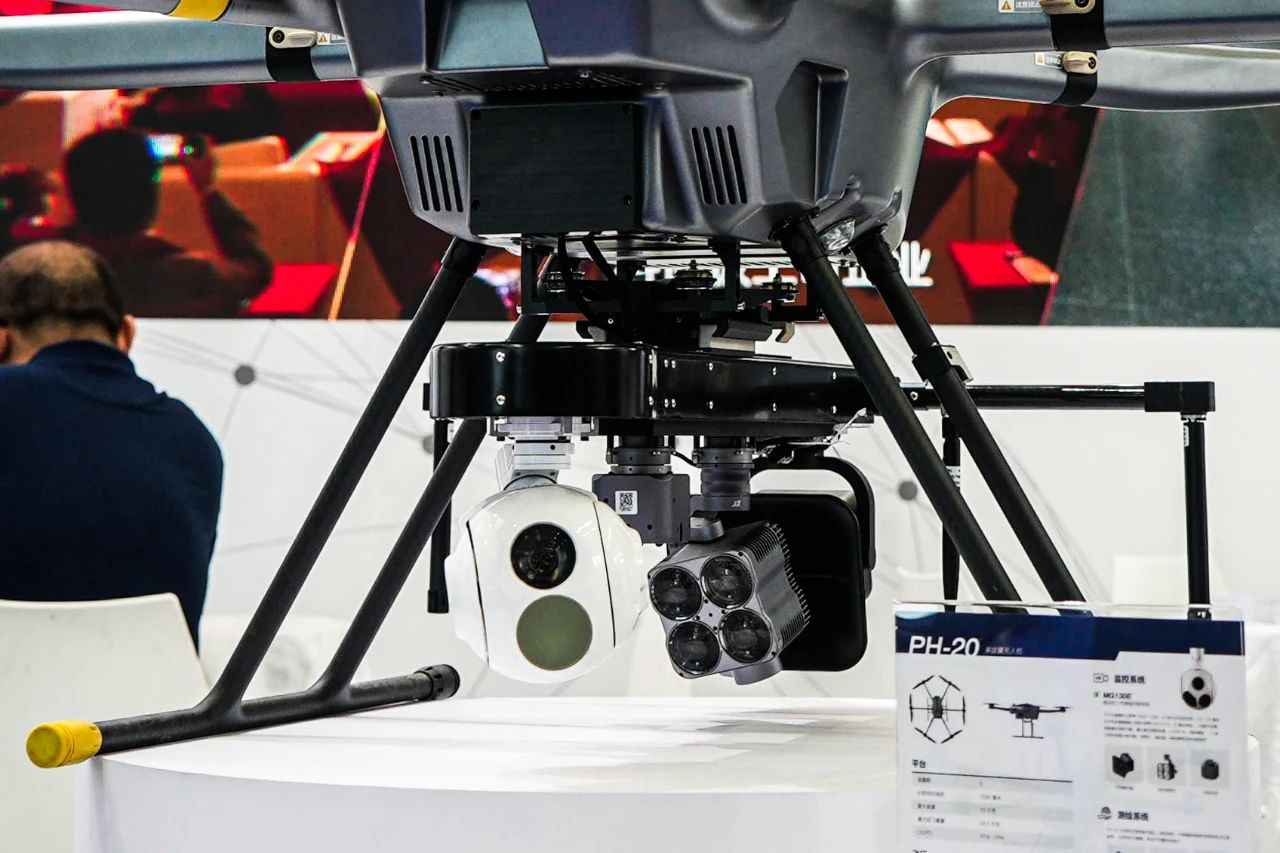
The JOUAV PH-20 is designed to carry multiple payloads simultaneously, making it highly versatile for a wide range of applications.
Flight Time
More rotors generally mean faster battery consumption, so flight time is a crucial factor:
- Standard Use: Most hexacopters offer 20–30 minutes of flight time, such as the Yuneec Typhoon H.
- Extended Industrial Missions: Professional drones provide 40+ minutes, like the Inspired Flight IF12000A.
- Hot-Swappable Batteries: Some models allow seamless battery replacement to extend operational time without a full restart.
Camera Quality
If aerial imaging is a priority, assess the camera’s resolution, stabilization, and compatibility:
- Cinematography & Professional Photography: Choose drones with 4K/6K+ cameras, gimbal stabilization, and low-light capabilities.
- Surveying & Mapping: High-precision RGB cameras or LiDAR sensors improve accuracy.
- Hobbyist & FPV Racing: Built-in 1080p or FPV cameras are sufficient.
Redundancy & Safety
Safety is critical, especially for industrial applications.
- Motor Failure Protocols: Drones like the JOUAV PH-20 can auto-land with one or two failed motors.
- Obstacle Avoidance: AI-powered sensors prevent collisions during autonomous flights.
- Failsafe Return-to-Home (RTH): Ensures the drone returns safely if battery levels drop or the connection is lost.
Durability & Weather Resistance
Outdoor operations require drones that can withstand harsh conditions. Consider:
- IP Ratings: An IP55+ rating ensures water and dust resistance, crucial for surveying and industrial work.
- Material Strength: Carbon fiber or aluminum frames provide durability while keeping the drone lightweight.
- Wind Resistance: Industrial drones are designed for stable flights in strong winds, ensuring accurate data collection and safe operations.
Check out this video of the JOUAV PH-20 being tested for waterproofing in heavy rain:
What Are Hexacopter Drones Used for?
Hexacopter drones are ideal for a variety of professional and industrial applications. Here are the most common uses of them:
Professional Cinematography & Broadcast Media
Hexacopters are the gold standard for high-end filmmaking and live broadcasting due to their ability to carry heavy cinema-grade cameras and stabilize shots in turbulent conditions.
- Blockbuster Movies: Lift RED Komodo, ARRI Alexa, or Sony Venice rigs for cinematic aerial shots.
- Live Sports Broadcasts: Stream real-time 4K/8K footage from dynamic angles (e.g., racing, skiing).
- Documentaries: Capture smooth tracking shots of wildlife or landscapes using 3-axis gimbals.
Precision Agriculture & Environmental Monitoring
Hexacopters enable data-driven farming and ecological research by deploying advanced sensors to optimize crop health and resource use.
- Multispectral Imaging: Map crop health via NDVI (Normalized Difference Vegetation Index) sensors.
- Soil Analysis: Use LiDAR to assess topography and irrigation needs.
- Pesticide Spraying: Deploy tanks (5–10L) for targeted chemical application.
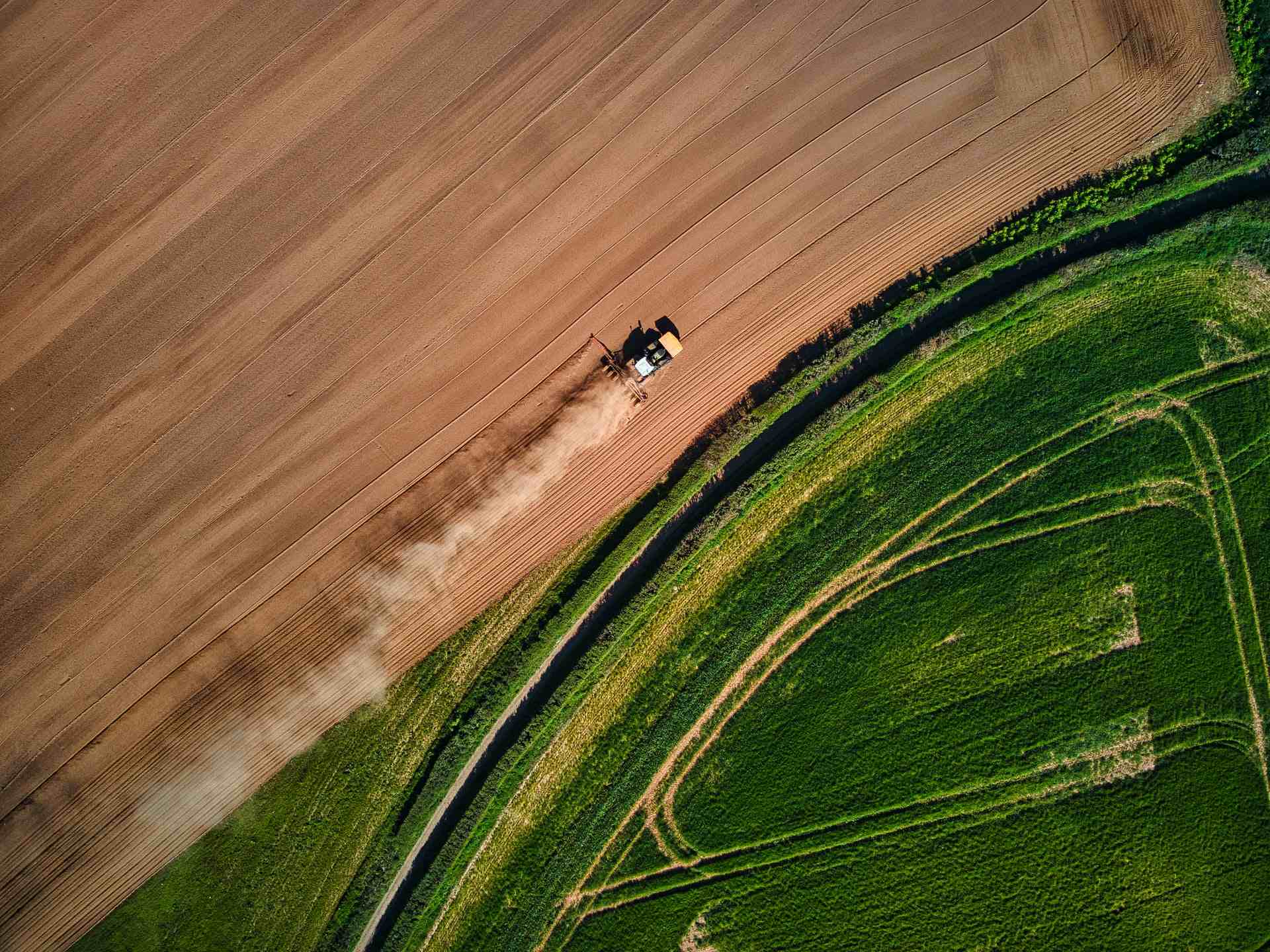
Infrastructure Inspection & Industrial Maintenance
From wind turbines to oil pipelines, hexacopters reduce human risk and operational downtime by accessing hazardous or hard-to-reach structures.
- Energy Sector: Inspect solar farms, power lines, and wind turbine blades for damage.
- Oil & Gas: Monitor pipelines and flare stacks with thermal cameras.
- Telecom: Audit cell towers and antennas using 20x zoom cameras.
Surveying, Mapping, & Construction
Hexacopters equipped with RTK (Real-Time Kinematic) GPS and LiDAR revolutionize land surveying, 3D modeling, and construction site management.
- Topographic Mapping: Generate centimeter-accurate DEMs (Digital Elevation Models).
- Urban Planning: Create 3D city models for infrastructure development.
- Volume Calculation: Measure stockpiles of gravel, sand, or mining materials.
Public Safety & Emergency Response
Hexacopters provide lifesaving support in disaster zones, search-and-rescue (SAR) missions, and firefighting operations.
- Disaster Assessment: Survey flood/earthquake damage with RGB and thermal sensors.
- SAR Operations: Locate missing persons using AI-powered object detection.
- Firefighting: Deliver emergency supplies or monitor wildfire spread via EO/IR cameras.
Defense & Security
Military-grade hexacopters execute reconnaissance, surveillance, and tactical missions with ruggedized designs and NDAA-compliant components.
- Border Patrol: Monitor unauthorized crossings with long-range EO/IR systems.
- Tactical Reconnaissance: Relay real-time battlefield data to command centers.
- CBRN Detection: Identify chemical or radiological threats with specialized sensors.
Scientific Research & Environmental Conservation
Researchers leverage hexacopters to study ecosystems, track wildlife, and combat climate change.
- Wildlife Monitoring: Track migratory patterns of endangered species (e.g., rhinos, whales).
- Glacier Studies: Measure ice melt rates with LiDAR and photogrammetry.
- Marine Biology: Deploy water samplers or hydrophones to study ocean health.
Logistics & Heavy-Lift Delivery
Hexacopters are pioneering autonomous cargo delivery in remote or inaccessible regions.
- Medical Supply Delivery: Transport vaccines, blood, or organs to rural clinics.
- Disaster Relief: Airdrop food, water, or communication devices in crisis zones.
- Industrial Logistics: Move tools/parts between offshore rigs or mining sites.
Mining & Resource Exploration
Mining companies rely on hexacopters for exploration, safety audits, and operational efficiency.
- Mineral Exploration: Use hyperspectral cameras to identify ore deposits.
- Blast Monitoring: Assess rock fragmentation post-explosion.
- Stockpile Management: Automate inventory tracking with AI-driven analytics.
Entertainment & Event Production
Hexacopters create immersive experiences at concerts, festivals, and light shows.
- Drone Light Shows: Coordinate swarms for synchronized LED displays.
- Live Event Coverage: Capture aerial footage of marathons, parades, or rallies.
- VR Streaming: Broadcast 360° video for virtual audience engagement.
How Much Does the Hexacopter Drone Cost?
Hexacopter drone prices range from $1,000 to over $50,000. Here's what to expect based on the drone cost:
| Price Range | What You Get |
| Under $1,000 | Basic FPV, short flight times, plastic frames |
| $1,000–5,000 | Mid-tier cameras, DIY kits, 15–25 flight time |
| $4,000-50,000 | Prosumer 4K, industrial durability |
| $50,000+ | Heavy payloads, 40+ min flight time, LiDAR |
Hidden Costs to Factor In:
- Batteries: 50–300 each.
- Repairs: Motor/ESC replacements cost 20–100 per part.
- Accessories: Gimbals (200–1,000), ND filters, cases.
How to Build a Hexacopter Drone?
Building a hexacopter drone is like assembling a high-tech puzzle—rewarding, but only if you fit the pieces right.
Step 1: Research & Planning: Know Your Parts
Before buying anything, understand the six core components of a hexacopter:
| Component | Purpose |
| Frame | Holds everything together |
| Motor | Generate thrust (6 needed) |
| Propeller | Lift and maneuver (6 pairs, CW/CCW) |
| Flight Controller | Brain of the drone (stabilizes flight) |
| ESCs | Control motor speed (6 needed) |
| Battery | Powers the drone |
| Radio System | Transmitter/receiver for control |
Pro Tip: Start with a DIY hexacopter drone kit (under $300) to simplify sourcing.
Step 2: Select Components: Match Specs to Your Goals
Frame
- Material: Carbon fiber (lightweight) vs. aluminum (durable).
- Size: 400–600mm (diagonal motor-to-motor) for stability.
- 3D Printing: Use free 3D model hexacopter drone blueprints from Thingiverse to save cash.
Motors & Props
- Motor KV: Lower KV (300–500) for heavy lifting, higher (800–1000) for speed.
- Prop Size: Match motor thrust (e.g., 10-inch props for 400mm frames).
Flight Controller
- Beginner: BetaFlight (FPV racing) or ArduPilot (autonomous modes).
- Pro: Pixhawk 4 with GPS for waypoint navigation.
Battery
Calculate Capacity:
Total Current Draw (A) × Desired Flight Time (mins) / 60 = Battery Capacity (Ah)
Example: 50A draw × 15 mins = 12.5Ah (12,500mAh).
Step 3: Assemble the Frame
- Attach Arms: Secure six arms to the center plate using screws.
- Mount Motors: Bolt motors to arm ends, ensuring wires face inward.
- Install ESCs: Strap ESCs to the arms or the center plate (keep wires tidy).
- Safety First: Use thread locker on screws to prevent mid-flight vibrations.
Step 4: Wire Electronics
- Connect ESCs to Motors: Solder ESC wires to motor terminals (match A, B, and C phases).
- Link ESCs to Flight Controller: Plug ESC signal wires into FC motor outputs (1–6).
- Attach Radio Receiver: Bind transmitter to receiver, then connect to FC.
- Add Extras: GPS, FPV camera, or telemetry modules.
Pro Tip: Use a power distribution board (PDB) to simplify battery-to-ESC wiring.
Step 5: Configure the Flight Controller
- Flash Firmware: Install the latest software (e.g., ArduCopter for Pixhawk).
- Calibrate Sensors: Accel, gyro, and compass (follow on-screen prompts).
- Set Motor Order: Confirm rotation directions (use BetaFlight Configurator).
- Enable Fail-Safes: Low-battery RTH, motor failure protocols.
- Software Tools: Mission Planner (Pixhawk), BetaFlight Configurator.
Step 6: Install Propellers
- Match Rotation: Attach CW props to CCW motors (and vice versa).
- Secure Tightly: Use nylon lock nuts or thread-locked bolts.
- Warning: Loose props cause instability or flyaways!
Step 7: Pre-Flight Testing
Bench Test:
- Spin motors (without props) via transmitter.
- Check for synchronization issues or ESC errors.
First Flight:
- Start in an open field.
- Hover at 3–5 feet and adjust PID settings if shaky.
- Test fail-safes (e.g., kill switch, RTH).
Step 8: Troubleshooting Common Issues
| Problem | Solution |
| Drone Tilt | Recheck motor order/prop rotation. |
| ESC Overheating | Upgrade ESCs or reduce payload weight. |
| Unstable Hover | Recalibrate IMU or adjust PID gains. |
| Short Flight Time | Swap to higher-capacity battery. |
FAQ
How High Can a Hexacopter Drone Fly?
Hexacopters are technically capable of reaching altitudes between 5,000 and 6,000 meters (16,400–19,700 feet) above sea level. However, practical performance is constrained by air density, which diminishes lift and motor efficiency at higher elevations.
For example, industrial models like the JOUAV PH-20 typically operate at 4,500 meters (14,800 feet) in optimal conditions.
How Far Can a Hexacopter Drone Fly?
The operational range of a hexacopter depends on its communication systems and battery life.
Consumer-grade models, such as the Yuneec Typhoon H, have a range of 1–5 kilometers using standard radio transmitters.
Professional drones like the JOUAV PH-20 leverage advanced transmission technologies to achieve ranges of 15–30 kilometers.
How Long Can a Hexacopter Drone Fly?
Consumer models have a flight time of 15–25 minutes, while industrial models can fly for 30–75 minutes. Flight time depends on the payload weight—adding 1 kg typically reduces it by 25–40%.
How Much Weight Can a Hexacopter Lift?
The lifting capacity of a hexacopter depends on its design, motor power, battery capacity, and frame strength.
Consumer-grade hexacopters typically carry payloads of 1–2 kg, while industrial models can lift 5–15 kg. Heavy-duty hexacopters designed for specialized applications, such as cargo transport or LiDAR mapping, can carry 20 kg or more.
How Many Motors Does a Hexacopter Have?
A hexacopter has six motors, arranged symmetrically to balance thrust and ensure redundancy. This configuration allows the drone to remain airborne even if one motor fails.
What's the Difference Between Hexacopter and Octocopter?
Here's a comparison table between hexacopters and octocopters:
| Feature | Hexacopter | Octocopter |
| Motors | 6 | 8 |
| Payload | 2–10 kg | 10–20+ kg |
| Redundancy | Survives 1–2 motor failures | Survives 2–3 motor failures |
| Cost | 1,000–50,000 | 3,000-250,000 |
| Use Cases | Professional filming, inspections | Heavy lifting (e.g., cinema cameras) |
Are Hexacopters Good for Beginners?
Hexacopters are not ideal for most beginners due to their complexity and cost. Beginners are better served by quadcopters, which are affordable, portable, and feature automated flight modes.
Hexacopters are better suited for professionals who need their advanced capabilities, such as filmmakers, surveyors, or industrial inspectors.




